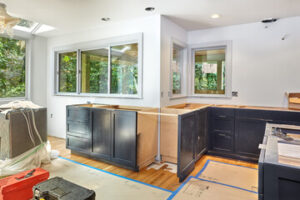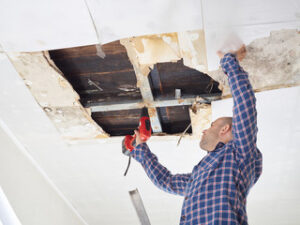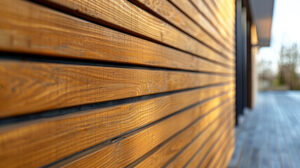Cabinet Refinishing Sacramento is a great way to update your kitchen without spending a fortune. But, like any home improvement project, it requires proper planning and skill to ensure a flawless finish.

It’s also important to note that lighting will play a big role in how paint colors and finishes look. For this reason, it’s best to view color samples in your kitchen at different times of day.
Cabinet refinishing is a much more affordable option than replacing your cabinets. It is also environmentally conscious. Replacing cabinets requires tearing out perfectly functional units, which end up in landfills. Refinishing your existing cabinets eliminates this waste and minimizes the demand for new materials, which in turn helps conserve natural resources.
The cost of refinishing your cabinets can vary depending on the type of finish you choose, but it is typically less expensive than a complete replacement. This is because refinishing only involves working with your existing cabinet boxes, whereas replacing them will require a full demolition of the existing cabinets and new installation of new doors and drawer fronts.
While refinishing is a cost-effective option, it may not be suitable for every remodeling project. If your cabinets are damaged, worn, or outdated, refinishing may not be enough to improve their appearance. In this case, refacing is a better option, as it allows for a completely new design and material, allowing you to fully customize your kitchen’s look.
In addition, refinishing often comes with additional costs that must be factored into your budget, such as any necessary preparation work. These tasks may include patching, sanding, and other repairs before the application of a new finish. Additionally, any customizations that you opt for will increase your overall project cost. Ultimately, it’s best to consult with professional contractors when planning your project. They can help you create a realistic budget for your project and ensure that all aspects are included in the final bill.
Refinishing your cabinets can be an excellent way to update your home’s aesthetic. By choosing a paint color and style that aligns with current trends or your personal style, you can give your cabinets a brand-new look. However, it’s important to keep in mind that your new finish will not be as durable as a cabinet replacement, and will likely show signs of wear and tear much faster.
Refacing your cabinets is a more expensive option than refinishing, but it offers many similar benefits to refinishing. It is a great choice for homeowners who are looking to completely transform their kitchens without the significant cost of a complete overhaul. Refacing involves replacing the cabinet doors and drawer fronts, while leaving the cabinet boxes intact. This is a more budget-friendly solution than full cabinet replacement, but it does not offer as many design options.
Time-Saving
Cabinet refinishing is a fast and cost-effective way to modernize your kitchen. By removing outdated hardware and painting or staining the cabinet boxes, you can give your space a fresh new look without spending a fortune on a full remodel. Additionally, refinishing your cabinets is an eco-friendly option that allows you to recycle your existing cabinetry rather than sending it to the landfill.
When refinishing your cabinets, the first step is to thoroughly clean the cabinet boxes to remove grease and grime and ensure that the new finish adheres properly. Afterwards, the surface is lightly sanded to create a smooth and even texture before priming and then painting. Once the paint or stain is dry, you can reinstall your cabinet doors and drawer fronts.
Choosing the right color and finish is an important aspect of a successful cabinet refinishing project. It is best to work with a professional who has experience working with different types of finishes and can help you choose the perfect color for your space. They can also advise you on the best type of paint or stain for your cabinet material, considering factors like durability, natural light, and other design features in your home.
While refinishing is a time-consuming process, hiring a professional can save you a lot of hassle and ensure that the results are high-quality. They have honed their skills through years of practice and will apply the proper techniques to achieve the desired outcome. Additionally, they will have the necessary knowledge and tools to handle any challenges that may arise during the refinishing process.
Hiring a professional is also essential for ensuring customer satisfaction. They will prioritize your needs and preferences, communicate effectively throughout the project, and strive to exceed your expectations. They will also have the necessary licensing and certifications to provide you with peace of mind that they are qualified to perform the job safely and efficiently. In addition, they will have liability insurance to protect you in case of any accidental damages that could occur during the project. Lastly, they will use proper ventilation to minimize fumes and dust, and will cover nearby surfaces to avoid contamination.
Eco-Friendly
When it comes to home improvement projects, many homeowners are seeking greener solutions. In addition to reducing their carbon footprint, these sustainable renovations save money and reduce waste. One of the best eco-friendly options for remodeling your living space is cabinet refinishing. This process is more affordable than replacing existing cabinets and offers a stunning transformation without breaking the bank or creating unnecessary waste.
Refinishing also minimizes the disruption to your daily routine. Unlike a full kitchen remodel, which can turn your kitchen into a construction zone for weeks or even months, refinishing takes just a few days. Moreover, the process is less invasive and does not require removing your existing cabinets, so you can enjoy your beautiful new look with minimal disruption to your life.
Many professional refinishing companies use low-VOC paints and finishes that are safer for the environment and improve indoor air quality. They also know how to properly prepare surfaces for refinishing and how to apply multiple coats of paint or stain to achieve a high-quality, durable finish. These steps ensure a long-lasting finish and ensure that your cabinetry looks brand-new.
Another benefit of cabinet refinishing is the ability to choose from a wide range of colors and finishes. Whether you prefer classic white, bold navy, or a trendy two-tone design, you can find the perfect color to complement your style and fit your needs. In addition, you can add unique details, like glazing and stenciling, to create a custom look that is completely your own.
Cabinet refinishing is also an environmentally friendly option for your home because it reuses the existing materials in your cabinetry. This eliminates the need to purchase and transport new materials, which can contribute to waste and environmental pollution. Moreover, you can further reduce your environmental impact by choosing reclaimed wood for your cabinetry. This not only helps reduce waste but also preserves the forests that provide a vital habitat for wildlife.
Cabinet refinishing is not suitable for DIY, and it should be left to professionals. Attempting a DIY project can result in costly mistakes and a subpar outcome. Inexperienced homeowners can end up with uneven or peeling finishes. Additionally, using the wrong chemicals or improperly preparing surfaces for refinishing can cause health hazards.
Customizable
Cabinet Refinishing is a great option for homeowners who want to upgrade their kitchens without the cost of completely replacing them. This process uses your existing cabinets and changes their appearance to match your personal style. By choosing the perfect color, finish, and design, you can transform your kitchen into a space that truly feels like home. It also helps you save money and time because the refinishing process is quicker than replacing your cabinets.
Cabinet refinishing involves sanding down your cabinets and applying a fresh coat of paint. This makes the surface look smooth and new, eliminating visual imperfections. It is important to use high-quality, durable paint so that your cabinets will last for a long time. It’s a good idea to hire a professional to complete the job because they will have access to premium materials and advanced techniques that will give you a lasting, beautiful result.
If you want to change the color of your cabinets but don’t need a full-on remodel, consider the cabinet color shift process from N-Hance. This service applies several coats of color to the wood cabinets’ surfaces by hand, giving them a darker overall tone. This allows you to change the color of your cabinets while preserving their existing door styles and finishes.
You can also customize the look of your cabinet doors by adding or changing the hardware, which can make a huge difference in your overall kitchen design. The finishing touches can really bring the whole room together and help your cabinets stand out.
Aside from transforming your kitchen into the home you’ve always dreamed of, cabinet refinishing can offer other benefits, such as increased home value, energy efficiency, and environmental sustainability. In addition, this process is less expensive and faster than replacement, making it the perfect solution for busy homeowners.




